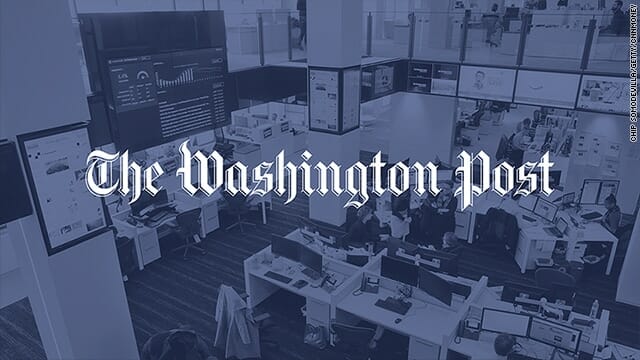CTE Education Perspective from The Washington Post
Post-pandemic high schools should offer more career and technical training. Here’s why.
Source: Article by Jay Matthews in The Washington Post
In 2014, Peters made a big shift in his working life by earning a marriage and family therapy license, moving from the AVID program, and starting a behavioral health and human services pathway at his school. He now teaches what were once called vocational education courses but are now known as career and technical education, or CTE. His courses focus on psychology to prepare students to seek college degrees in mental health or social work and eventually get jobs in those fields. The students also earn community college credit.
Peters thinks it no longer makes sense to load up all high school students with academic subjects like science, math and history. He believes all students need to take more CTE to develop individual interests, talents and hard skills. Even I, a total bookworm, took a mechanical drawing course in high school on the recommendation of a Boy Scout leader, and was glad I did.
Peters said he switched to CTE to “be a more effective teacher for all students and try to eliminate the distinctions between ‘advanced’ students and ‘regular’ students. Most of the kids in my psych pathway are in the top third of their class academically.” He said he would be happy if every student’s schedule was at least 25 percent CTE and included at least one advanced academic course, like AP or IB.
His enthusiasm for CTE stems in large part from a watershed change in 2013, when the California state legislature passed the Career Technical Education Incentive Grant program. “Suddenly every district, community college and public agency had a massive financial incentive to create or somehow support career themed pathways,” Peters said.
His huge school has nearly 3,000 students, 76 percent of them from low-income families. The ethnic mix is 66 percent Hispanic, 16 percent black, 13 percent white and 2 percent Asian.
Cajon High’s CTE offerings have rapidly multiplied from the old wood shop and auto shop to 10 career pathways, as they are now called, including Peters’s program. The other nine pathways at Cajon are theater arts, film theory/production, emergency medical services, medical assisting/patient care, sports medicine, cybersecurity, business logistics (sponsored by Amazon, whose founder, Jeff Bezos, owns The Washington Post) and the two traditional subjects, now known as automotive technologies and building trades/construction.
My question about high school vocational courses has always been: How do we know this training is good enough to lead to real jobs? Experts have told me in the past that only programs sponsored by companies or unions that had jobs to distribute would be successful.
Peters said that is still a good question. He sees a way to make such courses respected entry points into occupational college courses and careers, but only if high schools give them the support he had in his AVID program. He then led three or four teachers and 10 college tutors with an extra preparation period for each teacher. His behavioral health and human services pathway today is very different.
“I teach all of the classes in the program myself,” he said. That’s three different courses, but no extra prep period for even one of them. “I have money for all the field trips, guest speakers, books and T-shirts I want. What I can’t have is what I need most, more CTE teachers to partner with,” he said.
At Cajon High, like many other schools in California and elsewhere, teaching slot assignments serve the reigning assumption that all students need as many hours as possible in traditional academic subjects. Peters explained to me that students are required to take three years of history and three years of lab science to graduate, but are encouraged to take four years in each of those subjects when they only need two to get into college. They are encouraged to take four years of math when colleges only require three, and three years of foreign language when colleges only require two.
“The culture of high schools still defines success in terms of seat time matriculation through core courses,” Peters said. Schools emphasize attendance rates, graduation rates and completion rates for courses required for state college admission. “If we defined success of schools instead based on industry certifications, college course and internship completion, then we’d have something,” he said.
High schools welcome the new state money for CTE, he said, but “treat career pathways as a kind of lucrative extracurricular sideshow” rather than a core mission of secondary education.
Cleaning up the mess left by the pandemic will take flexibility and innovation. Why not try cutting back history and lab science for those interested in making movies or responding to ambulance calls? Companies and unions are more likely to support serious vocational programs if they are for everyone, and not just dumping grounds for kids who’ve fallen behind.


